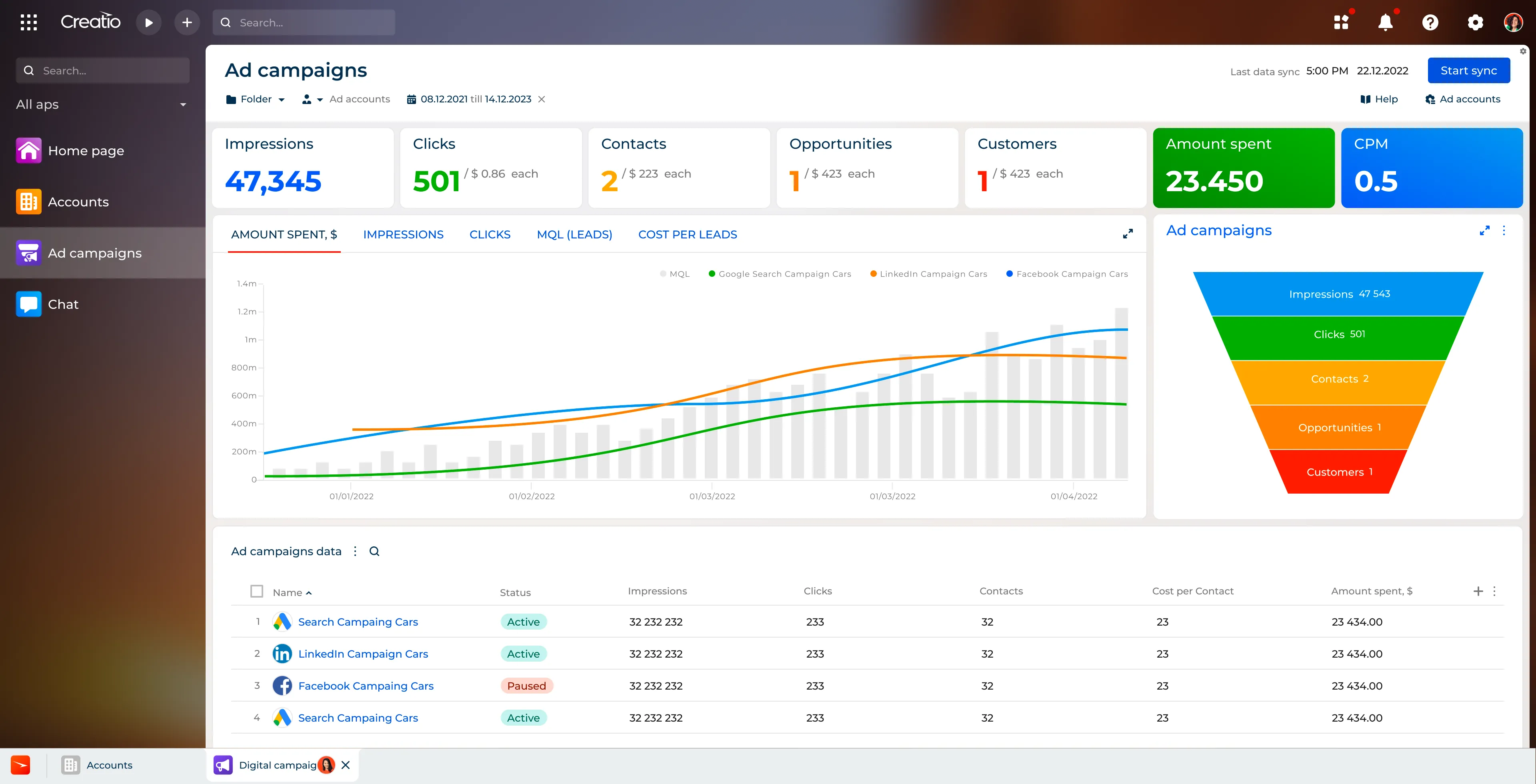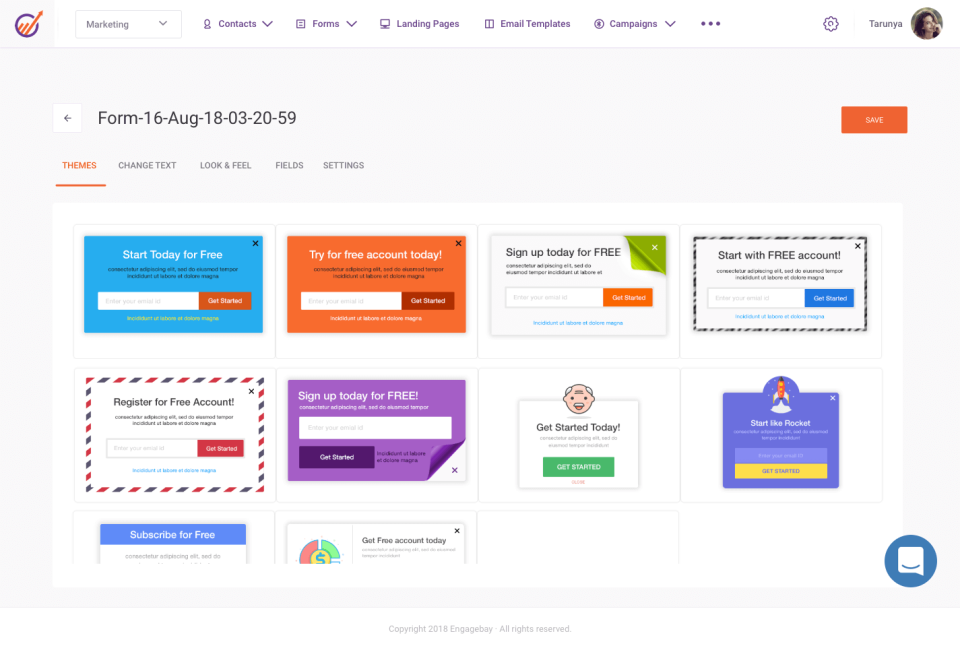Sales funnel and sales pipeline can both track lead activity, but in different ways.
If you’re a new business owner trying to build a sales team, you must decide how you’ll track lead qualification and sales activity. Sales funnel and sales pipeline are two visualization tools that can help, but it can be tricky to figure out which one you should use.
To assist you in selecting the right tool for your sales team, we explain the differences between a sales funnel and a sales pipeline, and provide further context and examples of their use cases. Along the way, we include insights from global research firm Gartner.[1-3] By the time you finish reading, you’ll be one step closer to forming a winning sales team.
What is a sales pipeline?
A sales pipeline is a tool that helps sales professionals visualize the conversion of leads into sales. It aligns with the different stages of the sales process, as shown in the example below.

The number of sales pipeline stages and their activities are entirely up to your organization. Here’s how we define ours:
Prospecting is about engaging with leads that fit your target buyer persona to identify a sales opportunity.
Presenting solutions involves connecting with qualified leads and showing them how your product or service addresses their specific needs.
Negotiating terms is where you and your buyer attempt to reach a mutually favorable agreement.
Closing the sale means a purchase order has been placed.
No matter how many stages your sales pipeline has or how you define each stage, sales pipeline maintenance requires consistent data input as well as monitoring and reviewing sales activities and key performance indicators (KPIs). Tech tools such as customer relationship management (CRM) software and sales tracking software can help.
What is a sales funnel?
A sales funnel is a tool that helps sales teams visualize the entire journey of a buyer—from awareness through purchase. The topmost stage starts with a large pool of prospects who gradually progress down the funnel to a smaller number of closed sales.

The stages of the sales funnel chart the customer journey from the time a lead is contacted by your sales rep to the time they buy your product or service. Their descriptions are as follows:
Intent means the lead is interested in placing an order but hasn’t just yet. They might indicate interest by taking a survey, watching a product demo, or placing an item in their shopping cart.
Evaluation is where the lead makes a final decision about whether they plan to place an order.
Purchase means the lead has placed an order.
Prospects arrive at the sales funnel after progressing through another funnel—the marketing funnel, which is more concerned with brand awareness and standing out among competitors. A CRM system can help you track leads as they progress through your funnel, but you can also use lead generation or marketing automation tools to monitor lead activity.
What is the difference between a sales pipeline vs sales funnel?
The main difference between a sales pipeline vs sales funnel is their focus. The sales pipeline aligns opportunities with sellers’ activities, whereas the sales funnel describes what’s going on in the minds of buyers. Because of this, the sales pipeline is usually more common among sales teams as it focuses on activities your sellers will carry out themselves.
Below, we discuss some other differences that may impact the way you build your sales team.
Marketing alignment
If one of your primary concerns in building a sales team is keeping their efforts aligned with marketing, the sales funnel is a natural choice. Almost a third of sales reps say alignment between marketing and sales teams is a challenge impacting lead quality,[1] and only a small percentage of marketing-generated leads convert to closed sales.[2]
Because the stages of the sales funnel follow those of the marketing funnel, a sales funnel helps you clearly visualize how marketing-qualified leads (MQLs) are converting into sales-qualified leads (SQLs). Your marketing team can also use this model to measure the effectiveness of a campaign, as shown in the example below from a CRM platform.

Ad campaign dashboard in Creatio CRM
Is your business small enough that you don’t have a marketing team just yet? A sales funnel will still be useful, but you may want to use a marketing funnel in conjunction to build brand awareness and interest, or you can hire a marketing service agency to do the work for you.
Roles and responsibilities
If you plan to have specialized roles instead of generalist sales roles on your team, the sales pipeline can help you visualize how each role fits into the sales process. This is good practice in general, as Gartner suggests aligning roles to activities that complement each other to improve performance and efficiency along each sales pipeline stage.[3]
For example, you might hire a sales development representative to prospect and qualify leads and then hire an account representative to present solutions, negotiate terms, and close the sale. And if you have customer retention as the final pipeline stage, you can also hire a customer success representative or account manager.
Generalist sales team members tend to get overwhelmed by processes that involve multiple products, customers, or territories, so it’s a good idea to align roles to activities that fit neatly within the stages of the sales pipeline. But if your organization is smaller and keeps its dealings fairly local, you can get away with hiring sales reps who oversee the entire sales process. In this case, either a sales pipeline or sales funnel would suit your needs.
Onboarding
The sales pipeline may be your best bet if you can devote time and resources to generating high product or service demand before hiring and onboarding sellers. Because sales pipelines are opportunity-oriented, roadmapping your revenue sources and deals beforehand reduces salesperson ramp time and helps sellers better execute the sales process.
You can get a head start on lead generation efforts by using a CRM tool with lead generation and lead capture capabilities. One way to get there is by including web forms on your website that sync with your CRM platform, so your contact list is automatically updated with details of all new leads. See below for an example of what web forms look like.

Web form feature in EngageBay CRM
Decide which tool is right for you, then invest in software for added support
Now that we’ve covered the differences between a sales pipeline and a sales funnel, take the time to reflect on your plans and concerns as you begin to build your sales team. You may find that you want to use both tools to track leads as well as seller activities.
Whatever you decide, we recommend investing in tech tools such as CRM software to keep your sales data in one centralized location. Use our Fit Finder tool to refine your requirements and see how well a product fits your particular needs.
Looking for more resources to support your sales team? Check out these articles:
